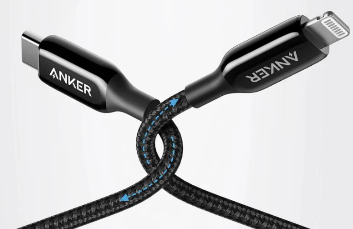Selecting the right USB type can be challenging with the array of connectors available. From USB-A to USB-C, each connector serves distinct roles in data transfer, charging, and compatibility across devices. This article explores the primary USB types—USB-A, USB-B, and USB-C—delving into their uses and best applications to help you make the best choice for your tech needs.
Understanding USB-A Connectors
USB-A is the most widely recognized and used USB connector. Its flat, rectangular shape has made it a standard for connecting keyboards, mice, and storage devices like flash drives. USB-A connectors are often compatible with multiple generations, including USB 1.0, USB 2.0, USB 3.0, and USB 3.1, each offering varied data transfer speeds and power capabilities.
While USB-A connectors work well for peripherals, they may not support the highest data transfer speeds required by modern devices. USB 2.0, for instance, has a maximum transfer rate of 480 Mbps, while USB 3.0 and later versions can reach speeds up to 5 Gbps or more. However, USB-A connectors are still highly reliable for basic connections where ultra-fast transfer speeds aren’t essential. Although newer devices increasingly incorporate USB-C, USB-A remains widely used due to its reliability and backward compatibility.
Exploring USB-B Connectors
USB-B connectors come in various forms, primarily designed for connecting larger devices to computers, such as printers, scanners, and external hard drives. Unlike the flat USB-A, USB-B connectors typically have a square shape with slightly beveled corners, which helps distinguish them and ensures they’re used in the right applications. USB-B connectors also exist in mini and micro variants for smaller devices, like older digital cameras and smartphones, where size constraints require more compact ports.
While USB-B may not be as widely utilized as USB-A or USB-C, it is still essential in specific setups, particularly where secure, reliable connections are necessary. For example, many audio interfaces and professional sound equipment use USB-B ports for consistent, high-quality data transfer. However, as USB-C becomes more versatile, USB-B usage is gradually decreasing in newer devices. Nevertheless, USB-B still plays a critical role in industrial and legacy setups where stability and compatibility with existing hardware are priorities.
Why USB-C is the Future of Connectivity
USB-C has rapidly emerged as the go-to connector due to its versatility and superior performance capabilities. Its small, reversible design makes it highly convenient, eliminating the frustrations of aligning connectors. USB-C supports a range of functions, from high-speed data transfer to power delivery, and is compatible with USB 3.1, USB 3.2, and USB 4, offering up to 40 Gbps transfer speeds in some models. USB-C also supports alternate modes, enabling it to connect to HDMI, VGA, and other display outputs, making it incredibly flexible for diverse applications.
One of USB-C’s most significant advantages is its ability to support high-wattage power delivery, making it ideal for charging laptops, tablets, and even some gaming devices. USB Power Delivery (PD) technology enables USB-C to provide up to 100 watts of power, streamlining charging for a wide range of devices. This feature, combined with its data capabilities, makes USB-C an ideal all-in-one solution, allowing a single cable to handle power, data, and video transfer, reducing the need for multiple cables and adapters.
How to Choose the Right USB Type
Choosing the right usb connector types depend on your devices, desired transfer speeds, and compatibility needs. Here are some general tips to guide your decision:
For Basic Connections: USB-A is ideal for keyboards, mice, and standard flash drives. If you need compatibility with a wide range of peripherals, USB-A remains reliable.
For Specialized Equipment: If connecting printers, audio interfaces, or legacy devices, USB-B is suitable, particularly in setups where reliability is crucial. USB-B’s various forms (standard, mini, and micro) cater to diverse equipment, so check your device’s port before purchasing a cable.
For High Performance and Versatility: USB-C is the best choice for new devices that demand high-speed data transfer, power delivery, and display output. USB-C’s all-in-one capabilities make it ideal for those looking to simplify their setup with a single cable for multiple functions.
Future Trends and Compatibility
As technology advances, USB-C is increasingly integrated across all types of devices. Its compatibility with Thunderbolt technology further enhances its functionality, offering faster data transfer and daisy-chaining capabilities. However, if you have devices with only USB-A or USB-B ports, adapters are available to bridge the gap between older and newer USB types, enabling you to use USB-C accessories with legacy devices.
Conclusion
Selecting the appropriate USB type is essential for optimal performance, device compatibility, and user convenience. Understanding the uses of USB-A, USB-B, and USB-C can help you choose the right connector based on your specific needs, whether it’s connecting basic peripherals, handling specialized equipment, or powering high-performance devices. With USB-C leading the future of connectivity, it offers the flexibility and efficiency needed in an ever-evolving digital landscape.

